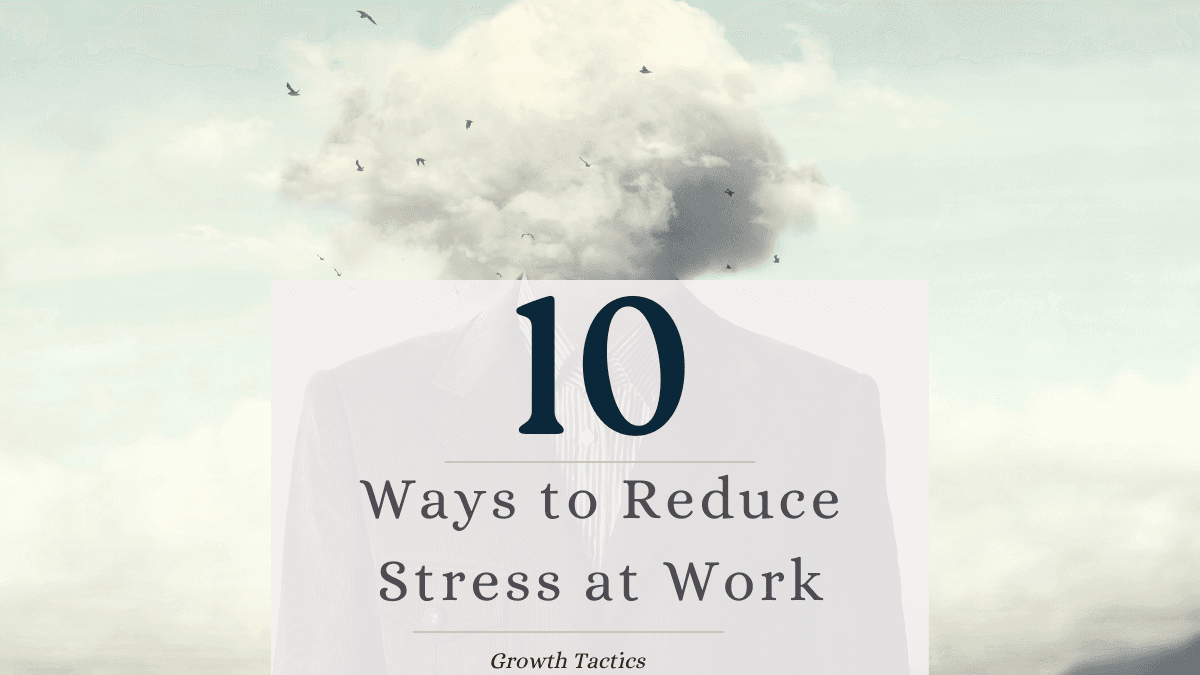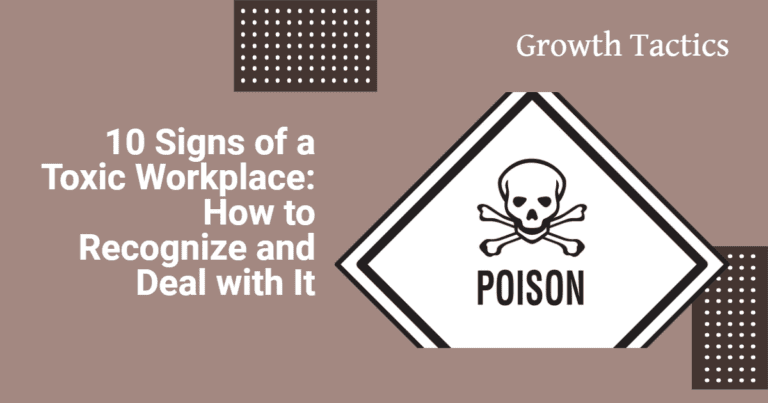Feeling like your job is a constant dogfight with stress? You’re not alone in this mission. As a military leader, I’ve faced my share of high-pressure situations. Now, I’m here to share some down-to-earth tactics that’ll help you reduce stress at work like a pro. Remember, you’ve got the power to take control. Let’s suit up and tackle this challenge together.
Jump To Section
1. Take Command of Your Schedule
Let’s talk about taking control of your day. A well-planned day is half the battle. You’ve got the power to steer your time in the right direction. Let’s look at how you can do just that.
How to Prioritize Tasks
First things first, you need to know what’s important. Start your day by listing out all your tasks. Now, here’s the trick: not everything is urgent. Ask yourself, “What really matters today?” Pick the top three things that will make the biggest impact. These are your priority missions for the day.
Remember, everyone’s priorities are different. What works for your coworker might not work for you. That’s okay. You’re the captain of your day. Trust your gut and focus on what moves you closer to your goals.
Simple Tricks to Manage Your Time Better
Now, let’s talk about some time-saving moves that’ll make your day smoother.
- Use the 2-minute rule. If a task takes less than 2 minutes, do it right away.
- Break big tasks into smaller chunks. It’s easier to tackle a big project bit by bit.
- Schedule breaks. Yes, you read that right. Taking short breaks helps you stay sharp.
- Learn to say no. You can’t do everything, and that’s okay. Focus on what matters most to you and your goals.
- Use a timer. Give yourself a set time for tasks. It’s amazing how much you can get done when you’re racing against the clock.
Remember, managing your time isn’t about squeezing more work into your day. It’s about making room for what truly matters. You’ve got unique strengths and goals. Use these tips to create a schedule that works for you, not against you.
Taking command of your schedule isn’t always easy, but it’s worth it. You’ll feel more in control and less stressed. Plus, you’ll have more time for the things you love.
2. Create Your Personal Stress-Free Zone
Let’s face it, your workspace can make or break your day. Let’s turn your desk into a powerhouse of productivity and peace.
Ready for takeoff? Let’s go!
Making your workspace work for you
First things first, take a good look at your desk. Is it helping you or holding you back? Remember, there’s no one-size-fits-all solution here. Your perfect workspace is as unique as you are.
Start by clearing the clutter. Keep only what you need within arm’s reach. Think of it like packing for a mission, only the essentials make the cut.
Do you have a favorite pen or a lucky charm? Keep it. If it boosts your mood, it stays.
Next, consider your comfort. Your chair should support you like a good wingman. Adjust it so your feet are flat on the ground and your eyes are level with your screen. Your body will thank you later.
Quick desk hacks to boost your mood
Now, let’s add some personal touches to lift your spirits:
- Bring in some green. A small plant can freshen up your space and your mind.
- Light it right. If you can, sit near natural light. If not, a good desk lamp can work wonders.
- Keep water close. Staying hydrated keeps you sharp. It’s like fuel for your brain.
- Add a pop of color. A bright mousepad or a colorful photo can perk up your mood.
- Use scents wisely. A subtle, energizing scent like peppermint can help you focus.
Remember, your workspace is your personal command center. It should energize you, not drain you.
Take charge and make it yours. A stress-free zone isn’t just nice to have, it’s critical for your success.
Creating your ideal workspace might take some trial and error. That’s okay. Keep tweaking until it feels just right. After all, you’re the commander of this space. Make it work for you, and watch your productivity soar!
3. Get Moving: Your Secret Weapon Against Stress
We’ve got a powerful tool to fight stress, and it’s simpler than you might think: movement. Your body isn’t built for sitting at a desk all day long. It’s your personal stress-busting machine. Let’s get it up and running!
Easy ways to add movement to your day
You don’t need a gym membership or fancy gear to get moving. Here are some simple ways to add motion to your daily routine:
- Take the stairs. It’s like a mini-mission every time you climb.
- Stand up during phone calls. Pace if you can. It’s like a walking briefing.
- Set an alarm to move every hour. Treat it like a drill, when it goes off, you move.
- Park farther away. Those extra steps add up.
- Desk stretches. Treat your body well, and give it attention throughout the day.
Remember, the goal isn’t to run a marathon. It’s to break up the stillness. Every bit of movement counts, just like every member of your team matters.
How physical activity can be your stress-buster
Now, let’s talk about why movement is your secret weapon to reduce workplace stress:
- It clears your mind. Exercise helps you process the day.
- It boosts your mood. Think of it as a natural morale booster.
- It improves sleep. Good sleep is crucial for any mission, including life.
- It increases energy. You’ll be ready for whatever challenges come your way.
- It builds resilience. Just like training toughens you up, regular movement strengthens your stress defenses.
The key is finding what works for you. Maybe it’s a quick walk, some jumping jacks, or gentle stretching. Whatever it is, make it yours.
Remember, taking care of yourself isn’t selfish, it’s necessary. You can’t do your best work if you’re stressed out. So, get moving. Your body, your mind, and your work will thank you for it.
4. Speak Up: Communication is Key
Let’s talk about talking. Communication isn’t just for radios and mission briefs. When stress piles up, speaking up can be your best defense.
Tactics for talking to your boss about workload
Feeling swamped? It’s time to call in air support. In this case, that’s your boss. Here’s how to approach the conversation:
- Prepare your intel. List your tasks and priorities before the talk.
- Choose the right moment. Find a time when your boss isn’t stressed.
- Be clear and direct. State why you feel stressed and how it affects your work.
- Offer solutions. Come with ideas, not just problems.
- Listen actively. Your boss might have insights you haven’t considered.
Remember, your boss wants you to succeed. They can’t help if they don’t know there’s an issue. Don’t be afraid to speak up.
Building allies at work to support you
In the Air Force, we know the power of a good wingman. The same goes for your workplace. Here’s how to build your support team:
- Be helpful. Offer support to others when you can.
- Share knowledge. If you know something useful, pass it on.
- Listen. Really hear what your coworkers are saying.
- Celebrate others’ wins. A little recognition goes a long way.
- Be reliable. Do what you say you’ll do.
Building allies isn’t about forming cliques. It’s about creating a network of support. When stress hits, you’ll have people in your corner.
Remember, you’re not alone in this. Your coworkers are facing their own challenges too. By speaking up and building connections, you’re not just helping yourself. You’re creating a stronger, more supportive workplace for everyone.
Communication is your tool. Use it wisely, use it often. Your work-related stress levels, and your work life, will thank you for it.
5. Know Your Benefits: Your Stress-Fighting Arsenal
Just like knowing your tools in any job, understanding your benefits can be a game-changer. Let’s explore your stress-fighting arsenal.
Understanding and using your employee benefits
Your employer health benefits are like a multi-tool, packed with features, but only useful if you know how to use them. Here’s how to make the most of what you’ve got:
- Read your benefits guide. It’s not exciting, but it’s important. Knowledge is power!
- Use preventive care. Regular check-ups can catch stress-related issues early.
- Try telehealth. Sometimes, a quick video call with a doctor is all you need.
- Explore wellness programs. Many plans offer gym discounts or stress management classes.
- Ask questions. If something’s unclear, reach out to HR or your benefits provider.
Remember, your health benefits are there to help you. Don’t let them gather dust like old equipment. Put them to work!
How to access mental health resources
Your mind needs care just like your body does. Here’s how to tap into your mental health resources:
- Check your coverage. Many plans now offer robust mental health services.
- Try Employee Assistance Programs (EAP). These often provide free, confidential counseling.
- Look into online therapy. It’s convenient and often covered by insurance.
- Explore apps. Some plans offer free subscriptions to meditation or mental health apps.
- Don’t hesitate to reach out. Seeking help isn’t a weakness, it’s a smart strategy.
Accessing mental health support is like calling for backup. It doesn’t mean you can’t handle things. It means you’re smart enough to use all the resources at your disposal.
Remember, your benefits are part of your compensation. Using them isn’t just okay, it’s smart. They’re tools to help you be your best, both on and off the job. So go ahead, open up that benefits toolkit, and start fighting stress at work like a pro. Your future self will thank you!
6. Arm Yourself with Stress Management Skills
Let’s talk about gearing up for the battle against stress. Just like you’d prep for any mission, it’s time to arm yourself with some powerful stress management skills. These tools can be your secret weapon in keeping cool under pressure.
Simple techniques to calm your mind
Everyone’s different, so find what works for you. Here are some tried-and-true techniques to get you started:
- Deep breathing: Take a deep breath in for 4 counts, hold for 4, then out for 4. Repeat until you feel calmer.
- Mindfulness: Focus on the present moment. What do you see, hear, and feel right now?
- Physical activity: A quick walk or some push-ups can work wonders.
- Gratitude: List three things you’re thankful for. It’s hard to be stressed when you’re grateful.
- Progressive muscle relaxation: Tense and then relax each muscle group, starting from your toes and working up.
Remember, these aren’t just nice-to-have skills. They’re essential tools in your stress-fighting toolkit. Practice them regularly, and you’ll be ready when stress in the workplace strikes.
Resources for learning stress management
Want to level up your stress management game? Here are some resources to check out:
- Apps: Try Headspace or Calm for guided meditations and sleep stories.
- Books: “The Relaxation and Stress Reduction Workbook” by Martha Davis is a great start.
- Online courses: Coursera and edX offer free stress management courses from top universities.
- Local classes: Check your community center or gym for stress management or yoga classes.
- Professional help: Don’t hesitate to talk to a counselor or therapist for personalized strategies.
Learning stress management is like any other training. It takes practice, but it’s worth it. You wouldn’t go into battle without the right gear, so don’t face stress without the right skills.
By taking care of yourself, you’re setting an example for others and ensuring you’re at your best when it counts. So gear up, practice your skills, and show work stress who’s boss!
7. Set Realistic Personal Deadlines
Let’s talk about deadlines. We all know they can be tricky beasts and huge stressors, but with the right approach, you can tame them. Setting realistic personal deadlines is a skill that’ll serve you well in life.
How to manage expectations (yours and others)
First things first: be honest with yourself. It’s easy to think you can do it all, but even the best employees have limits. Here’s how to keep things real:
- Know your pace: Track how long tasks usually take you. Use this info to set better deadlines.
- Add some wiggle room: Things don’t always go as planned. Give yourself a buffer.
- Communicate clearly: If others are involved, let them know your timeline early on.
- Learn to say no: It’s okay to turn down tasks if your plate is full.
- Adjust as needed: If you realize a deadline isn’t realistic, speak up sooner rather than later.
Remember, managing expectations isn’t about lowering standards. It’s about being smart and setting yourself up for success.
Tricks to break big tasks into manageable chunks
Big tasks can feel overwhelming, like trying to eat an elephant in one bite. But here’s a secret: you don’t have to. Try these tricks to make big tasks feel smaller:
- Use the 1-3-5 rule: Plan to tackle one big thing, three medium things, and five small things each day.
- Try the Pomodoro Technique: Work for 25 minutes, then take a 5-minute break. Repeat.
- Make a mind map: Break your big task into smaller parts visually.
- Create a task hierarchy: Organize subtasks under main tasks.
Breaking tasks down isn’t just about getting things done. It’s about building confidence and momentum. Each small win moves you closer to your goal.
Experiment with these techniques and find your own rhythm. The goal isn’t perfection; it’s progress. So go ahead, set those deadlines, and tackle those tasks. You’ve got this!
8. Be a Culture Change Agent
It’s time to talk about being a force for good in your work environment. You don’t need a fancy title to make a difference. Every single one of us can be a culture change agent. Let’s dive into how you can spread positivity and influence others, just by being you.
Small ways to promote positivity at work
You don’t need grand gestures to make work better. Here are some simple ways to help brighten up your workplace:
- Smile and say hello: A warm greeting can set a positive tone for the day and the workforce around you.
- Offer help: See a coworker struggling? Lend a hand and encourage employees around you to do the same.
- Celebrate small wins: Did someone finish a tough task? Give them a high-five!
- Keep your space tidy: A clean desk can boost mood and productivity.
- Share credit: When you succeed, make sure to thank those who helped.
Remember, these small acts add up, improving workplace culture. In the Air Force, we learned that every team member plays a crucial role. The same goes for your workplace. Your positive actions, no matter how small, can create a ripple effect.
How your attitude can influence others
Your attitude is like a superpower. Use it wisely! Here’s how your outlook can shape those around you:
- Be the calm in the storm: When things get hectic, stay cool. Others will follow your lead.
- Choose optimism: Look for solutions, not just problems. It’s contagious!
- Be open to ideas: Listen to others. It encourages creativity and teamwork.
- Own your mistakes: Admitting when you’re wrong shows integrity and builds trust.
Your attitude sets the tone. Think of yourself as a thermostat, not a thermometer. You don’t just reflect the temperature, you can change it!
Being a company culture change agent isn’t always easy. There might be days when positivity feels tough. That’s okay. Remember, you’re human. What matters is that you try. Every positive action, no matter how small, makes a difference.
In the end, it’s about people. Your coworkers, your team, your leaders, they’re all impacted by how you show up each day. So show up with purpose. Be the change you want to see in your workplace. You have the power to make work better, one smile, one helping hand, one positive attitude at a time. Now go out there and make some waves!
9. Master Your Time with the Right Tools
Let’s talk about mastering your time. Having the right tools can make or break you. But remember, you’re unique. What works for your buddy might not work for you. Let’s explore some options to help you win the battle against the clock.
Apps and methods to boost your productivity
There’s a whole world of productivity tools out there. Here are some popular ones to try:
- Trello: Great for visual planners. Organize tasks into boards and cards.
- Todoist: Perfect for list-lovers. Create to-do lists and set reminders.
- Forest: Helps you focus by growing virtual trees while you work.
- RescueTime: Tracks how you spend your time on your devices.
- Pomodoro Technique: Work for 25 minutes, then take a 5-minute break.
Don’t feel pressured to use them all. Pick one or two that catch your eye and give them a shot.
Finding what works best for your style
Now, here’s the real secret: the best tool is the one you’ll actually use. Here’s how to find your perfect match:
- Know yourself: Are you a visual person? A list-maker? Choose tools that fit your style.
- Start small: Don’t overhaul your whole system at once. Try one new method at a time.
- Give it time: Stick with a tool for at least two weeks before deciding if it works for you.
- Mix and match: Combine different tools to create your own unique system.
- Keep it simple: If a tool feels too complicated, it’s probably not right for you.
Remember, productivity isn’t about doing more. It’s about doing what matters most. These tools should help you focus on your priorities, not just fill up your time.
In the Air Force, we have a saying: “Work smarter, not harder.” That’s what these tools are all about. They’re not here to run your life. They’re here to help you run your life better.
So, go ahead and experiment. Try different apps and methods. Find what clicks with you. And don’t be afraid to change things up if something stops working. Your productivity system should work for you, not the other way around.
At the end of the day, you’re in charge. These tools are just that; tools. You’re the one with the power to make things happen. So grab your favorite app or method, and let’s conquer that to-do list together.
10. Protect Your Work-Life Balance
We’ve all learned that a well-rested person is an effective person. A healthy work-life balance isn’t just nice to have, it’s a must-have for your success and happiness. It’s one of the most effective ways to reduce stress.
Setting boundaries like a pro
Listen up! Setting boundaries isn’t being mean. It’s about respect, for yourself and others. Here’s how to do it:
- Be clear: Tell people when you’re available and when you’re not.
- Stick to your guns: Don’t cave in when someone pushes your limits.
- Use tech wisely: Set up “do not disturb” times on your phone.
- Learn to say no: It’s okay to turn down extra work or invites sometimes.
- Communicate: Let your team know your boundaries upfront.
Remember, you’re not being selfish. You’re being smart. Good boundaries make you better at your job and help reduce workplace stress.
Making time for what matters most to you
Now, here’s the real deal, you need to make time for what lights you up. Here’s how:
- Know your priorities: What really matters to you? Family? Hobbies? Fitness?
- Schedule it: Put your important stuff on your calendar first.
- Defend your time: Treat your personal time like it’s as important as work (because it is!).
- Start small: Even 15 minutes a day for yourself can make a big difference.
- Be present: When you’re off work, really be off work. Put the phone down!
I’ve seen too many folks burn out because they didn’t make time for themselves. Don’t let that be you.
Your personal time isn’t just “free time.” It’s your recharge time. It’s when you grow, connect, and become the best version of yourself. That makes you better at work, too.
So, set those boundaries. Make time for what matters. It might feel tough at first, but stick with it. You’ll soon see the difference in your energy, your mood, and your overall satisfaction with life.
Remember, you’re not just a worker bee. You’re a whole person with dreams, loves, and passions. Honor that. Protect your balance. You deserve it, and you’ll be better for it in every part of your life.
Now go out there and take charge of your time.
Conclusion
Remember, managing stress isn’t just about surviving at work, it’s about thriving in all areas of your life. By putting these strategies into action, you’re not just reducing stress; you’re building resilience and taking control of your career. You’ve got the power to transform your work life from stressful to successful. Take that first step today.








